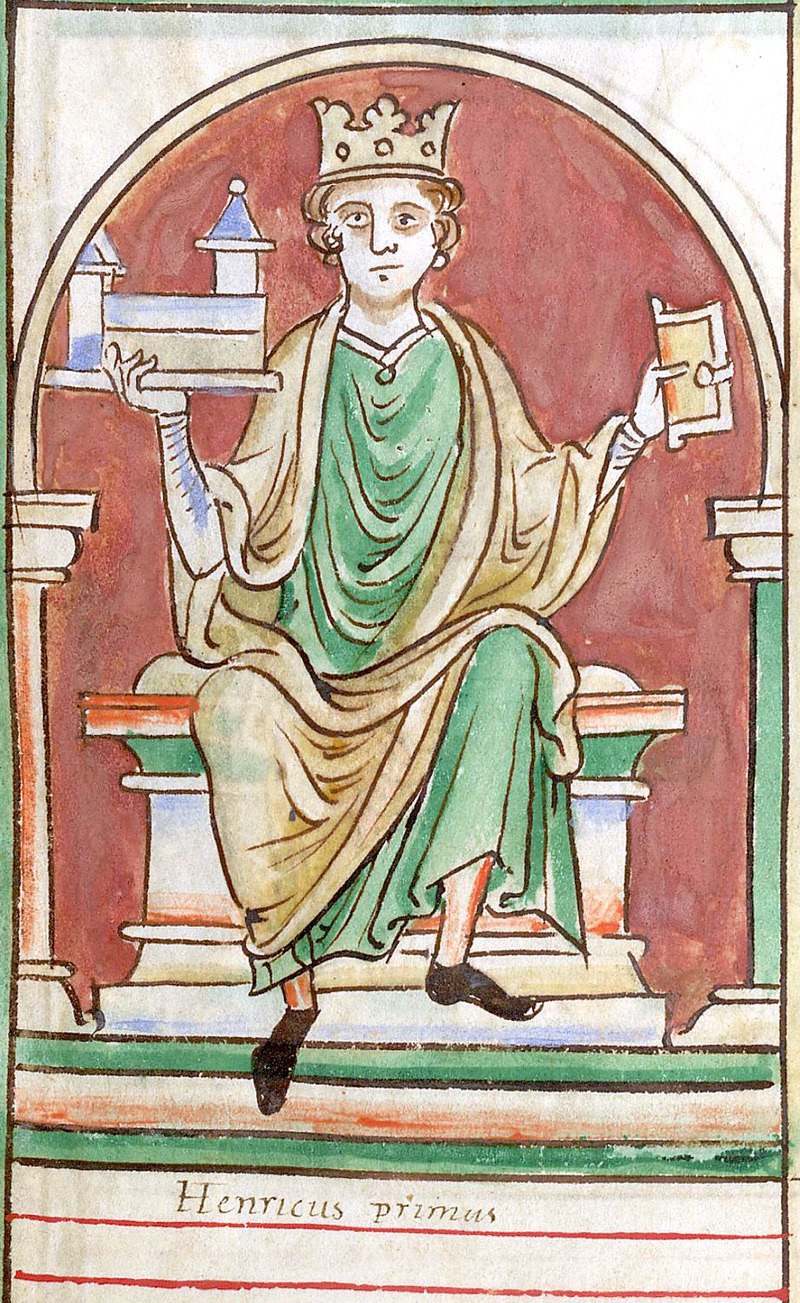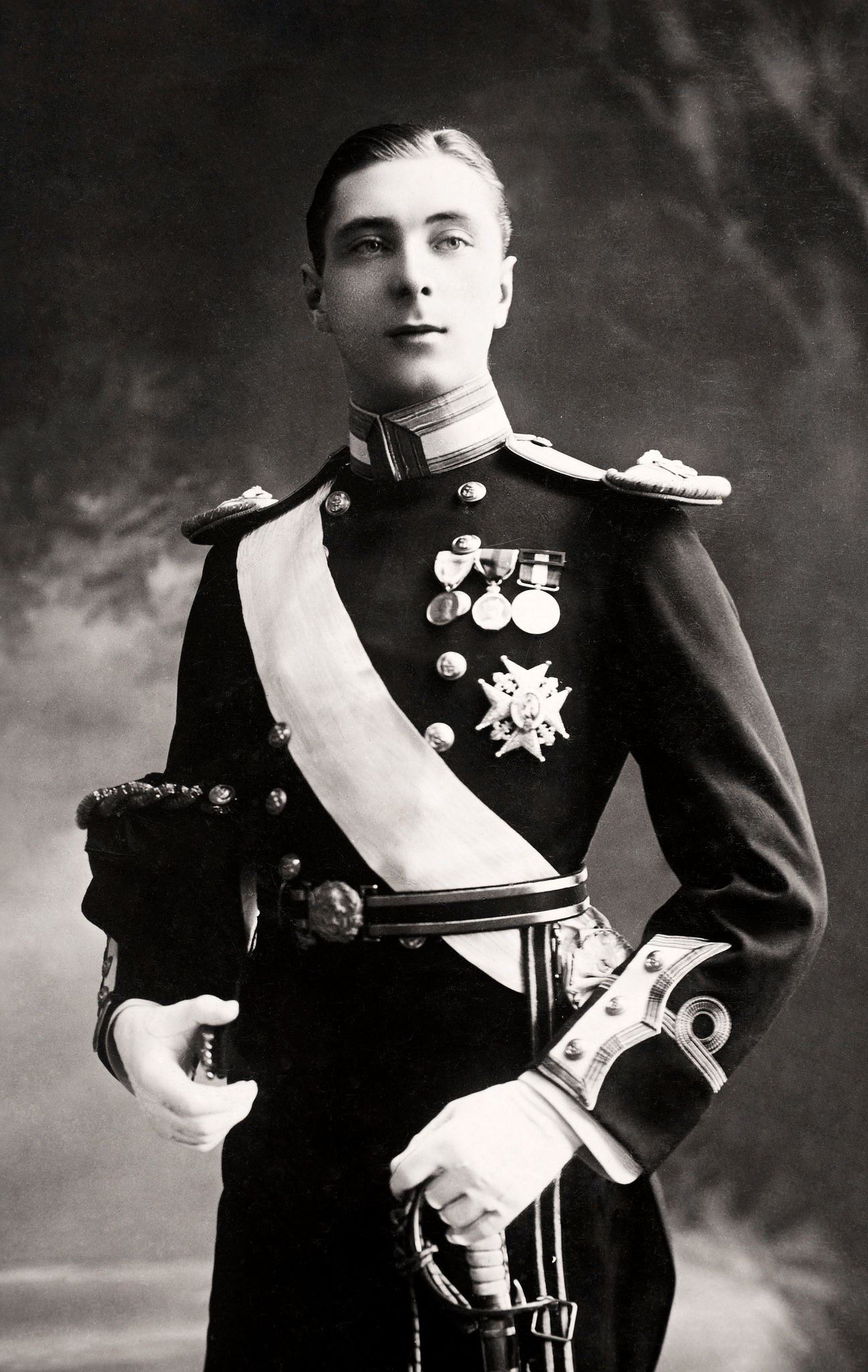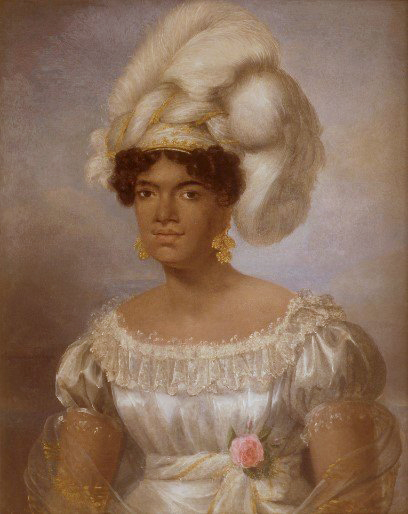by Susan Flantzer
© Unofficial Royalty 2024

King Henry I of England, father of Richard of Lincoln; Credit – Wikipedia
Richard of Lincoln was one of the three children – one legitimate (Henry I’s only legitimate son and heir) and two illegitimate – of King Henry I of England who were killed in the tragic sinking of the White Ship in 1120. Richard was born before 1101. His mother was probably Ansfride (circa 1070 – 1164), who was sometimes called a mistress and sometimes called a concubine. Ansfride was the widow of Anskill of Abingdon, a knight and a tenant of Abingdon Abbey in Abingdon, England, who died following a few days of harsh treatment after being imprisoned by King William II Rufus, King Henry I’s brother and predecessor. Richard’s paternal grandparents were King William I of England (the Conqueror) and Matilda of Flanders.
King Henry I holds the record for the British monarch with the most illegitimate children, 25 or so illegitimate children who were Richard’s half-siblings.
Richard’s probable full siblings:
- Juliane of Fontevrault (circa 1090 – 1136), married Eustace de Pacy, Lord of Pacy, Breteuil, and Pont-Saint-Pierre, had two sons and two daughters
- Fulk FitzRoy (circa 1092 – 1132), a monk at Abingdon Abbey
Richard had two royal half-siblings from her father’s marriage to Matilda of Scotland:
- Empress Matilda, Lady of the English (1102 – 1167), married (1) Heinrich V, Holy Roman Emperor, no children (2) Geoffrey V, Count of Anjou, had three sons including King Henry II of England
- William Ætheling, Duke of Normandy (1103 – 1120), married Matilda of Anjou, no children, William Ætheling, King Henry I’s only legitimate son and heir, died in the sinking of the White Ship
Richard was brought up and educated by Robert Bloet, Bishop of Lincoln, who had also educated Richard’s half-brother Robert FitzRoy, 1st Earl of Gloucester, another illegitimate son of King Henry I.
Richard fought in the war between his father and King Louis VI of France in which King Henry I had to defend his territories in the Duchy of Normandy, now part of France. Richard was at his father’s side during the siege of the castle of Évreux being held by Henry I’s most detested enemy, Amaury III de Montfort. Richard was also at the Battle of Brémule on August 20, 1119, where the decisive English victory led to Louis VI’s accepting Richard’s half-brother William Ætheling as Duke of Normandy. In 1120, Richard was betrothed to Amice de Gaël, daughter of Raoul II de Gaël, Lord of Gaël, Montfort, and Breteuil. However, the marriage never took place because of the tragedy of the White Ship on November 25, 1120.
Because the Kings of England still held Normandy (in France) and were Dukes of Normandy, they were often in Normandy, and this was the case in November 1120. After the successful military campaign in which King Henry I of England had defeated King Louis VI of France at the Battle of Brémule, the English were finally preparing to return to England. King Henry I was offered the White Ship for his return to England, but he had already made other arrangements. Instead, Henry suggested that his only son and heir William Ætheling, Duke of Normandy sail on the White Ship along with his retinue which included William’s illegitimate half-brother Richard of Lincoln, William’s illegitimate half-sister Matilda, Countess of Perch, Richard d’Avranches, 2nd Earl of Chester and many of the heirs of the great estates of England and Normandy.

The sinking of the White Ship; Credit – Wikipedia
William Ætheling and his retinue boarded the ship in a festive mood and barrels of wine were brought on board to celebrate the return to England. Soon both passengers and crew were inebriated. By the time the ship was ready to set sail, there were about 300 people on board, including many high-ranking people of Norman England. William and his retinue ordered the captain of the White Ship to overtake the ship of King Henry I so that the White Ship would be the first ship to return to England. Unfortunately, the White Ship hit a submerged rock and capsized.

An 1866 watercolor by Queen Victoria’s daughter Princess Louise showing a scene from the sinking of the Blanche Nef or White Ship. A male figure, probably William Ætheling, is shown in a lifeboat to the lower left. He is shown full-length, standing with his hands clasped together and looking up towards his half-sister Matilda, Countess of Perche who is still on board the ship. Drowning men are shown trying to climb into the small boat which is soon to capsize; Credit – Royal Collection Trust / © His Majesty King Charles III 2023
William’s bodyguard quickly got the heir to the throne into the safety of a dinghy. However, William Ætheling heard the screams of his half-sister Matilda, Countess of Perche, and ordered the dinghy to turn back to rescue her. At this point, the White Ship began to sink and the many people in the water desperately sought the safety of William’s dinghy. The chaos and the weight were too much causing William Ætheling’s dinghy to capsize and sink without a trace. The contemporary chronicler Orderic Vitalis claimed that only two people survived the shipwreck by clinging to a rock all night.
The people of the coastal communities of Normandy found bodies washed up on the beaches. Charles Spencer writes in his book The White Ship: Conquest, Anarchy and the Wrecking of Henry I’s Dream that among the bodies found was that of Richard of Lincoln. He had been in the water long enough to lose his facial features which had been eaten, rotted, or cut up by the rocks. Richard was identified by his clothing.

King Henry I mourning the loss of three children in the sinking of the White Ship; Credit – Wikipedia
The sinking of the White Ship caused King Henry I to lose two illegitimate children, Richard of Lincoln and Matilda FitzRoy, Countess of Perche, and most importantly, King Henry I’s only son William Ætheling. King Henry I holds the record for the British monarch with the most illegitimate children, 25 or so illegitimate children, but the tragedy of the White Ship left him with only one legitimate child, his daughter Matilda. Henry I’s nephews were the closest male heirs. In January 1121, Henry married a second time to Adeliza of Louvain, hoping for sons, but the marriage remained childless. On Christmas Day in 1226, King Henry I of England gathered his nobles at Westminster where they swore to recognize his daughter Matilda and any future legitimate heir she might have as his successors. That plan did not work out. Upon hearing of Henry I’s death on December 1, 1135, Stephen of Blois, one of Henry I’s nephews, quickly crossed the English Channel from France, seized power, and was crowned King of England on December 22, 1135. This started the terrible civil war between first cousins Stephen and Matilda known as The Anarchy. England did not see peace for more than 18 years until Matilda’s son acceded to the throne as King Henry II of England in 1154.
This article is the intellectual property of Unofficial Royalty and is NOT TO BE COPIED, EDITED, OR POSTED IN ANY FORM ON ANOTHER WEBSITE under any circumstances. It is permissible to use a link that directs to Unofficial Royalty.
Works Cited
- Ansfride Concubine #3 of Henry I King of England. geni_family_tree. (2022a, August 22). https://www.geni.com/people/Ansfride-Concubine-3-of-Henry-I-King-Of-England/6000000001563248849
- Beauclerk-Dewar, Peter, & Powell, Roger. (2006). Right Royal Bastards – The Fruits of Passion. Burke’s Peerage & Gentry LLC.
- Flantzer, Susan. (2015). King Henry I of England. Unofficial Royalty. https://www.unofficialroyalty.com/king-henry-i-of-england/
- Flantzer, Susan. (2015). The Sinking of the White Ship and How It Affected the English Succession. Unofficial Royalty. https://www.unofficialroyalty.com/november-25-1120-the-sinking-of-the-white-ship-and-how-it-affected-the-english-succession/
- Spencer, Charles. (2022). The White Ship: Conquest, Anarchy and the Wrecking of Henry I’s Dream. William Collins.
- Weir, Alison. (2008). Britain’s Royal Families – The Complete Genealogy. Vintage Books.
- Wikimedia Foundation. (2023e). Richard of Lincoln, illegitimate son of Henry I of England. Wikipedia. https://en.wikipedia.org/wiki/Richard_of_Lincoln_(illegitimate_son_of_Henry_I_of_England)











